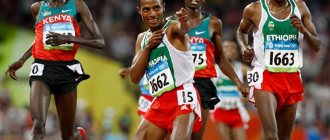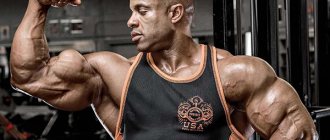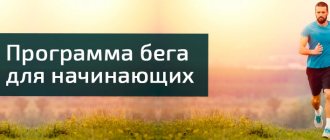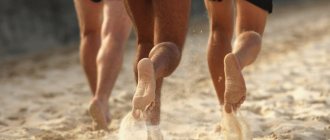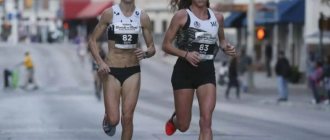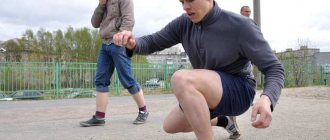I had never done running or other athletics before. I exercise irregularly and try to go to the pool a couple of times a week. With the onset of the most popular bullshit in 2022, many sports clubs have closed or reduced their opening hours. Going to the pool has become much more difficult; there is not enough exercise.
After sitting at home for a month without much physical exercise, when summer arrived I decided to take up running. Finding a place for a morning run is not that difficult. Everyone will definitely have a school, stadium or park within walking distance.
Nobody prohibited solitary activities in the fresh air; this can be done without a mask, a dog or a trash can.
I chose to conquer a distance of 5000 meters as my goal. It is a stadium Olympic track and field discipline that requires both speed and endurance from the runner.
The world record for this distance when running outdoors belongs to Ethiopian runner Kenenisa Bekele and is 12:37.35 minutes.
Current standards for military personnel require covering such a distance from 16 to 19 minutes. This is what the category standards for running 5000 meters look like.
For an ordinary office worker or freelancer, the very fact of running such a distance will already be an excellent result. Let's start with this.
The benefits of running for the body
Armchair analysts often add running to the list of useless sports activities that are boring, have virtually no positive effect on the body and, on the contrary, can cause harm. There are a number of studies and observations that prove the benefits of such loads.
?♂️ A 30-minute run reduces tension and improves your mood
The US National Library of Medicine ( NLM ) has proven the effects of running on improving a person's vital signs.
The small study involved 40 people who were being treated for major depressive disorders.
Some subjects regularly jogged for 30 minutes, while others rested during the same period in a calm environment. After this, both groups underwent a psychological test to determine basic indicators of well-being.
All runners performed significantly better than those who simply took time to rest.
?♂️ Running improves your sleep
Researchers from the Journal of Adolescent Health found that running significantly improves sleep quality and increases a person's focus throughout the day.
The study involved fifty 18-year-olds, some of whom jogged at an average pace for 30 minutes, five days a week.
During the study, all runners had better sleep quality, mood, and concentration on the learning process. Among those who did not run, only one in four had similar indicators.
?♂️ Running improves the ability to switch between tasks and the functioning of a person’s working memory
A global meta-study from the academic company Springer Nature showed the positive effects of running on the human brain.
People who run have a better ability to switch between tasks, increased concentration, and the ability to keep more current thoughts and indicators in their heads.
There was also a decrease in the natural process of atrophy of the prefrontal cortex in all runners.
?♂️ Regular jogging strengthens the cardiovascular system
The US National Center for Biotechnology Information ( NSBI ) conducted a study that involved more than 50 thousand people aged 18 to 100 years.
The main goal of the study was to find the relationship between people's mortality from cardiovascular diseases and whether they run or not. So, over 15 years of research, it was possible to establish that jogging greatly reduces the mortality rate.
People who run several times a week at a speed of less than 10 km/h for just 10 minutes per session have a 29% reduction in cardiovascular disease mortality. If you regularly run at least twice a week for about 50 minutes at a distance of up to 10 km, mortality is reduced by 50%.
?♂️ Running strengthens joints
One of the myths against running is that such loads increase the risk of joint damage and the development of related diseases. This thesis was refuted by researchers from the US National Library of Medicine ( NLM ).
They conducted a large-scale survey among 675 runners. Most of them have taken part in 5 marathons and run at least 15 km per week. The age of the respondents ranged from 18 to 79 years.
The study found that in every age category, active runners were half as likely to develop arthritis and joint problems. On average, such problems occur in 18% of non-runners and approximately 9% of runners.
?♂️ Running reduces the age of blood vessels
The Journal of the American College of Cardiology ( JACC ) followed a group of 138 people aged 21 to 69 who trained for a running marathon over a 6-month period.
All participants had regular blood pressure measurements and vascular elasticity measurements using MRI. This indicator helps to calculate the so-called age of the vascular system.
All subjects ran between 10 and 20 km per week. Over 6 months, an increase in the elasticity of blood vessels and a decrease in their age by an average of 4 years were noted. Greater “rejuvenation” of the vascular system was observed mainly in older runners.
Recommendations
To avoid injuries during training, before starting it is necessary to warm up for about half an hour. It is also advisable to create an individual training schedule.
After the main part of the workout, it is necessary to do a cool-down. To do this, you need to walk at a calm pace for about a kilometer in a straight line or several laps around the stadium. It will take no more than five minutes, but will bring tangible benefits to the body.
Cooling down is an excellent prevention of muscle soreness that may appear in the following days after training. Cooling down also prevents the formation of blood clots that interfere with normal blood circulation.
What a beginner runner needs
Running is a relatively inexpensive sport; starting out requires a minimum of investment. If you wish, you can not buy anything special at all and make do with existing things, gadgets and accessories.
In the future, as your interest in running grows, you can buy new things that increase convenience and comfort.
To begin with, I recommend the following minimum set of things for running:
Running shoes ?
Good special running shoes are a necessary attribute of this sport. You shouldn’t choose old worn-out Snickers, basketball or football boots, or flat sneakers for this. You can run without a smartphone, headphones and a fitness bracelet, but without good shoes - it is strictly not recommended.
The following requirements apply to running shoes:
? sneakers should have good cushioning to soften bumps or debris that gets under your feet;
? the soles should have abrasion-resistant inserts so that you don’t have to change your shoes after a couple of months;
? running shoes are never made of leather or suede; the upper part must have good ventilation and sufficient flexibility;
? the weight of one sneaker should not exceed 400 grams.
There are other requirements for running shoes, but a good place to start is to find a pair of running shoes that meet the points above. You need lightweight shoes, mainly with a mesh covering on top, the sole should be wear-resistant with good shock absorption.
The second most important thing for running is a smartphone?
Everyone already has a gadget, so why not use it for useful purposes. The device is mainly necessary for collecting statistics.
Not everyone needs a pulse rate or blood oxygen saturation level while running; it is not at all necessary to have a special watch or bracelet for this. You can measure the distance traveled, the route and draw it on the map using your smartphone.
The gadget will also help brighten up your sports activities with energetic, motivating music, your favorite podcasts or audiobook.
The third accessory that it is advisable to have for running is a comfortable headset?
Wireless headphones will allow you to move comfortably without the fear of touching the wire. Both TWS (wireless headphones) and pseudo-wireless headsets are suitable for running.
It all depends on the personal preferences of each user. For some people, the extra wire around their neck makes them uncomfortable when turning their head or simply rubs their neck. Some people, on the contrary, are afraid that a separate earphone may fall out while running and prefer the option with a wire between the ears.
The last recommended accessory is a small fanny pack?
It is better to put a rather large modern smartphone in a belt bag or a biceps case. This way, the gadget will not interfere during sports, but will be within reach.
Don't even count on the pockets of shorts, shirts or tracksuits. The gadget will constantly move around and interfere with running.
When choosing a belt bag, choose the smallest one that will hold your smartphone securely in one place. Another advantage of a special bag is the need to put the keys and the case for TWS headphones somewhere.
I chose this accessory from the Xiaomi sub-brand.
Food
This is even harder than training, all the sweet tooths in the world will understand me now. Of course, I didn’t stick to some kind of running diet, where every gram of protein and carbohydrates per kilogram of body weight is calculated. I just had to basically give up sweets (girls, only for a month, and you can subsist on marshmallows and gummies) and follow the basic basic principles of nutrition. And they are as follows: in the morning, oatmeal with fruits, nuts, honey, all at once, whatever you like; pre-dinner snack, also known as lunch - banana (can be replaced with another fruit); lunch - vegetables and meat (yes, that same terribly boring chicken breast); dinner - cottage cheese (with honey, I was completely sad without honey). Of course, you can change the options, but the essence remains the same: carbohydrates in the morning, proteins in the evening. We say goodbye to fast carbohydrates.
Which app is best for running?
During the first week of training, I went through a couple of dozen fitness programs for runners. Some were expensive but didn't have all the useful features, others offered subscriptions, and others were simply full of annoying ads.
Unfortunately, most of the popular applications in the sports niche are frankly average, but at the same time they will satisfy the majority of modern users.
I can recommend the following apps for beginner runners:
Adidas Running
A long time ago, the application was called Runtastic and had a paid Pro version with advanced features. Later, in the wake of the popularity of freemium, the utility was switched to subscription, and even later the application was bought by Adidas.
It's still a good and functional program. Even if you use it for free, it has everything you need. When preparing for a marathon or competition, you can choose a special program and receive personalized recommendations, but these features are only available by subscription.
Not a bad app, but it requires registration and many features are only unlocked after payment.
Nike Run Club
A free application that is often promoted by Apple when advertising its smartwatches.
The utility easily copes with collecting all the necessary statistics and at the same time has additional social networking capabilities for runners. You can find other athletes nearby, share your successes with friends, or organize team challenges.
Those who cannot do something without encouragement will be pleased with a large number of achievements and awards.
Strava
This is one of the oldest social networks for runners and cyclists. In addition to keeping track of statistics, the application regularly throws up all sorts of challenges and gives out rewards.
You can record running metrics for marked areas to see your progress in each segment.
As in previous cases, there is a paid subscription for advanced features and personal training programs.
Run. Start running
I came across this app completely by accident and ended up choosing it.
This is the simplest program with all the necessary features. At the same time, the application is not full of advertising, useless features or unnecessary achievements.
A program for those who want to easily start running using interval training. There are four difficulty levels, progress tracking and statistics collection, voice prompts when changing activities (running to a step and back).
With a one-time purchase, you can open custom workouts and thank the developer. There is nothing superfluous here.
World records
The 2000 m race is not included in the program of the Olympic Games and the World Athletics Championships, but now the distance is regularly included in commercial competitions. So the 2000m still has a lot of room for improvement.
Men
- Hisham El Guerrouj (Morocco) – 04:44.79 (1999, Berlin)
Women
- Genzebe Dibaba (Ethiopia) – 05:23.75 (2017, Edinburgh)
The European records in the men's and women's categories are held, respectively, by the young Norwegian runner Jakob Ingebrigtsen (04:50.01, sixth fastest in history, 2022) and Sonia O'Sullivan from Ireland (05:25.36, second fastest in history, 1994).
Jakob Ingebrigtsen sets a new European record in the 2000m race
In the top 10 results in the women's 2000 m race, Soviet athletes Tatyana Kazankina (05:28.72, 1984) and Tatyana Pozdnyakova (05:29.64, 1984) appear in 6th and 7th places.
How to run the first 5 km
For beginners in this sport, everyone recommends the interval running method. It allows you to smoothly increase endurance and learn to run long distances without stress to the body.
With this method of training, running alternates with walking at certain intervals. Segments can be measured in different ways: by distance or by time. The first method is not particularly convenient, given that it is recommended to change intervals every workout.
The first workouts with this method will consist of more walking than running, and then their ratio will gradually change. The main thing is to move throughout the workout and not stand.
For those who have never done athletics or regular physical activity before, it is best to start with intervals of 2 minutes of walking and 1 minute of running. Slightly trained runners can safely move on to a ratio of 1 minute of walking and 1 minute of running.
The first workout can last about 20 minutes, with no more than 10 minutes of running. Then each subsequent workout should become longer.
Increasing the load at the first level of training
During the first month, the duration should double and be about 40 minutes. In this case, the ratio of walking to running should be approximately 40:60.
After another month, the training time should increase to an hour. In this case, you need to run at least 40 minutes from this time. So in one workout you will run about 7-9 km in total.
The fourth month of training using the interval method involves going to a clean 40 minutes of running without breaks for walking. This will allow you to run 5 km at an average speed of about 8-9 km/h.
This is exactly the training method already included in the Running app. Start running , which I chose for myself. The exercises are divided into 4 levels, each lasting 12 workouts. If you run three times a week, it will take about a month to complete one stage.
School standards
| Class | Boys | Girls | ||||
| rating "5" | rating "4" | rating "3" | rating "5" | rating "4" | rating "3" | |
| 5th grade | regardless of time | regardless of time | regardless of time | – | – | – |
| 6th grade | regardless of time | regardless of time | regardless of time | – | – | – |
| 7th grade | 09:30 | 10:15 | 11:15 | 11:00 | 12:40 | 13:50 |
| 8th grade | 09:00 | 09:45 | 10:30 | 10:50 | 12:30 | 13:20 |
| 9th grade | 08:20 | 09:20 | 09:45 | 10:00 | 11:20 | 12:05 |
| Grade 10 | – | – | – | 10:20 | 11:15 | 12:10 |
| Grade 11 | – | – | – | 10:00 | 11:10 | 12:20 |
Features of the technology
The 1km distance seems to have a lot in common with sprinting. The speed is really quite high.
However, the running technique is close to marathon, especially if you just want to pass the standard.
- The main point is the movement of the legs. The legs should form a “ running wheel ”. This effect is achieved by rolling: heel-toe, when the foot touches the ground under the center of gravity (pelvis). It is very important that your feet do not land in front of your body. This significantly slows down the athlete + can cause serious injuries: inflammation of the periosteum, damage to the knee joints, stress fractures of the bones of the foot;
- The arms are bent at the elbows at an angle greater than 90 degrees. Shoulders are dropped back and relaxed. Make sure that your arm movements occur without twisting your torso! This will worsen your results;
- Breathe in a comfortable rhythm through your nose + mouth;
- The body can be tilted forward: maximum angle is 4 degrees.
1K running technique requires attention to detail. The distance is quite short, so every minute for such a race is an eternity.


